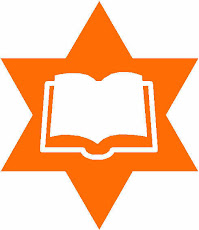Here’s one that I particularly like – from a community I used to work with:
The mission of the Religious School is to teach and promote living Judaism – from a perspective of Reconstructionist thought and practice – as the way to create personal, communal and ecological tikkun. All Religious School programs are designed to accomplish two goals:
- To foster Jewish literacy, including the following components –
*Values & concepts
*Texts – Tanach
*History – Experience of the Jewish People
*Hebrew (i.e., language) - To engender an appreciation for Jewish living, including the following aspects:
*Spirituality
*Rituals & their meaning
*Ethics (Tikkun)
Note that we are not claiming to foster a commitment to Jewish living, though this is indeed our hope. Though we feel our program will make this more likely, it is the actions of home, synagogue, and community interacting with school that will be the ultimate determinant of commitment.
This Mission Statement was written for a school that met the following hours: 2 hrs per week for K-2; 4 hours per week for grades 3-6; 3.45 hours per week for grade 7; and 1.45 hours per week for grades 8-12. They also had a HomeSchool component for families who were unable to participate in the midweek program for whatever reason.
It articulates several points very clearly – life skills are important; so is the identification with a particular Jewish movement. It’s reasonable to assume that the components of Jewish literacy that this community wishes to focus on are listed in order of importance. The aspects of Jewish life to focus on are spirituality, rituals AND meaning, and ethics. Tikkun /Repair is mentioned twice in the statement, so one can assume that social action could be a key component as well.
The final statement is perhaps the most interesting. The Statement acknowledges that the ultimate determining factor of commitment to a Jewish life style depends on “home, synagogue, and community interacting with the school.” The school doesn’t carry the burden alone. It may well be that this value helped determine the success of the HomeSchool program – parents teaching children within the parameters of the school-designed program worked remarkably well for about 25% of the student body.
With this Mission Statement in place, I would design a curriculum that has a heavy emphasis on values and text, followed by a “social studies” component which includes Jewish history and experiences as part of klal Israel / the Jewish people. Less emphasis would be placed on Hebrew language.
As it happened, this particular school ended up with two discrete segments: the Sunday program, which encompassed more traditional topics taught in a more traditional way; and the Midweek Program, which focused on Hebrew review and a Chuggim/ Clubs Program. The Chuggim program taught values through art, music and movement, drama, creative writing, and cooking.
The Mission Statement is the starting point for serious work with curriculum. All other decisions – content, emphasis within content area, methodology – are shaped by what the school articulates as its vision.
This will be the Mission Statement for the hypothetical school I’ll have my Teacher Training participants “work with” in the lab section of our classes.




